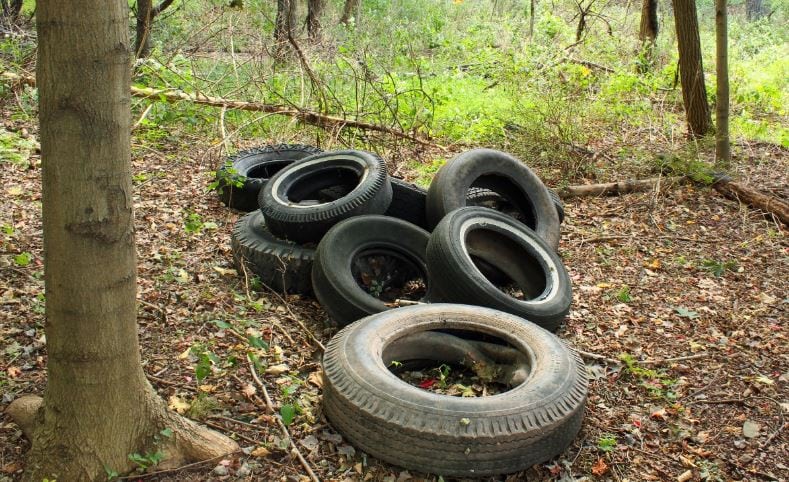Missouri citizens generate about six million scrap tires a year, or about one per person per year. Just what is a scrap tire? A scrap tire is a tire that can that can no longer be used as it was originally designed to be used, it has sat out in the elements for over a year, has been cut up in some fashion or someone has placed it somewhere just to be rid of it.
An environment free of scrap tires is important to the public health of all Missouri citizens. Why? Scrap tires can become homes for mosquitoes, snakes and other vermin. Mosquitoes breed in the stagnant water that collects inside tires. Because diseases transmitted by mosquitoes can be a serious health threat, removing and properly managing scrap tires is a priority in Missouri.
Do NOT burn them! It is illegal to burn tires in Missouri, except at facilities approved by the department. Uncontrolled tire burning can pollute our air, water and groundwater.
Some options for properly disposing of scrap tires are:
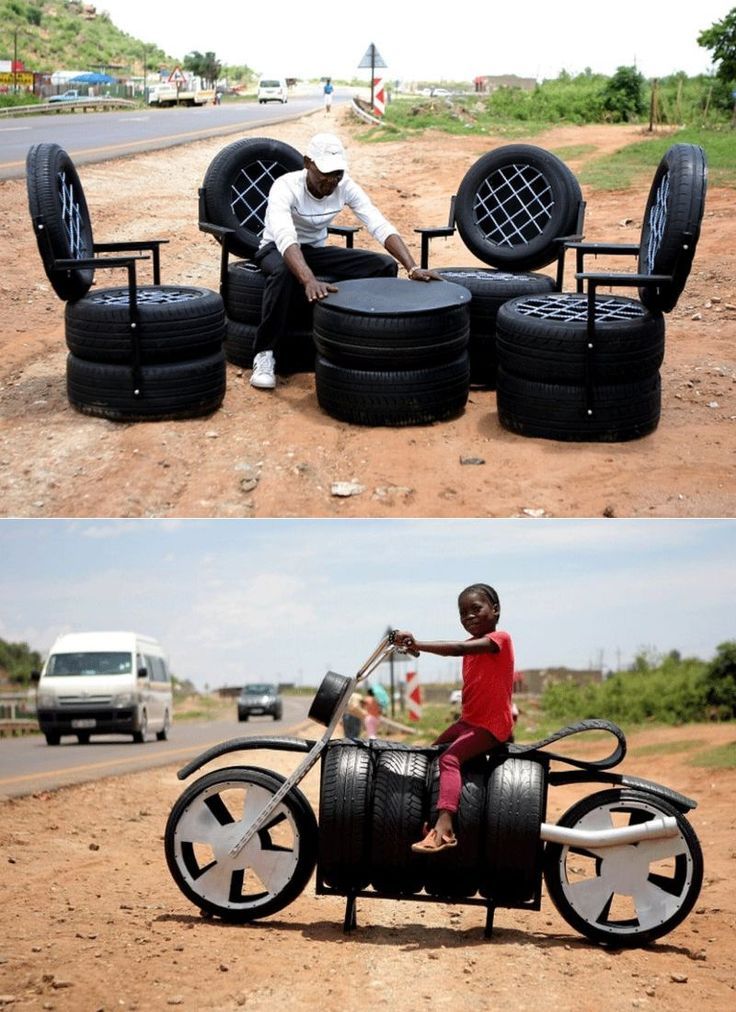 For more information about this reimbursement program, visit Scrap Tire Cleanups by Non-Profit Groups.
For more information about this reimbursement program, visit Scrap Tire Cleanups by Non-Profit Groups.By 1990, illegal scrap tire piles had become so large and widespread in Missouri that the State Legislature passed Senate Bill 530. This legislation acknowledged scrap tires as a significant waste stream in the state and established a scrap tire fee to fund the Missouri Department of Natural Resources' scrap tire oversight and management activities, scrap tire cleanups by non-profit groups, educational programs/ curriculum about solid waste management and scrap tire surface material grants. The 50-cent scrap tire fee is applied to the retail sale of every new tire.
Scrap tire shredding at the Bishop Tire Site, 2006.From 2006 until 2018, the department conducted a scrap tire cleanup program called the Scrap Tire Roundup. The department partnered with the Missouri Department of Corrections to cleanup tire dump sites containing between 500 to 10,000 tires. Due to the economic feasibility of conducting these cleanups, the department shifted its focus from conducting tire cleanups to encouraging and supporting the development of alternative, beneficial uses for scrap tires. The department uses the funds generated by the scrap tire fees to create economic incentives for properly managing scrap tires in Missouri. The department also educates individuals and businesses and strives to maintain a level playing field for all industry members through permitting scrap tire processors, inspecting scrap tire businesses and taking enforcement actions as needed. For general information about managing scrap tires, visit Management of Scrap Tires - PUB2056.
Due to the economic feasibility of conducting these cleanups, the department shifted its focus from conducting tire cleanups to encouraging and supporting the development of alternative, beneficial uses for scrap tires. The department uses the funds generated by the scrap tire fees to create economic incentives for properly managing scrap tires in Missouri. The department also educates individuals and businesses and strives to maintain a level playing field for all industry members through permitting scrap tire processors, inspecting scrap tire businesses and taking enforcement actions as needed. For general information about managing scrap tires, visit Management of Scrap Tires - PUB2056.
Since authorization and funding began in 1990 -
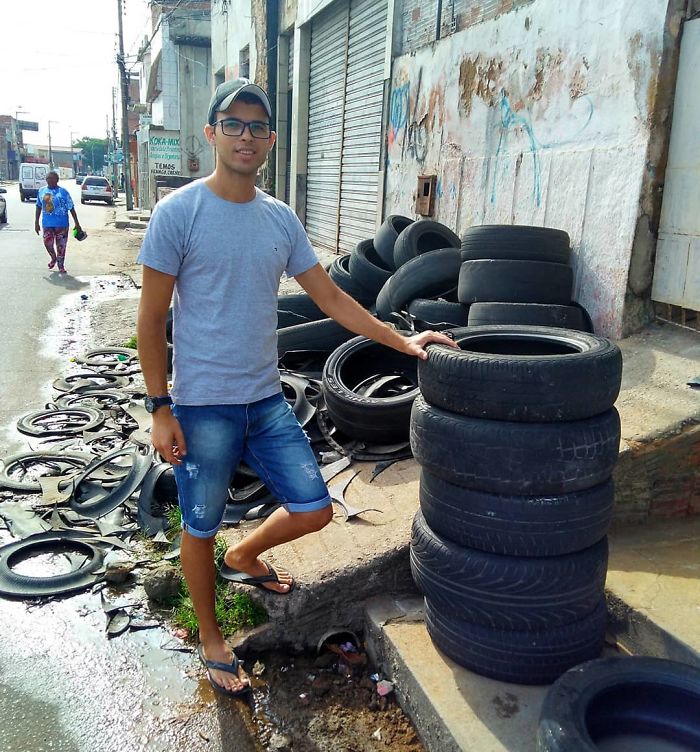
For more information about scrap tires, visit Scrap Tire Guidance Documents and Fact Sheets.
Burning rubber is a quick way to create junk. When it's time to buy new tires, your old tires quickly turn from useful car parts to giant, piles of rubber junk.
Although old tires can be reused as swings, gardening planters, and construction project materials, most people tend to stuff old tires into a corner of their garage or leave them by the trash bins. However, old and waste tires are usually not accepted in regular waste services - meaning you may never even see them leave your yard. Luckily, 1-800-GOT-JUNK? is happy to help you with old and used tire disposal in your city.
However, old and waste tires are usually not accepted in regular waste services - meaning you may never even see them leave your yard. Luckily, 1-800-GOT-JUNK? is happy to help you with old and used tire disposal in your city.
Please note that not all locations are able to accept tires, due to differences in local regulations. Give us a call to see how best your local team can help!
No matter where you live, tires shouldn't go to the dump. If you need old tires removed, 1-800-GOT-JUNK? can help with tire recycling near you.
Don't let those waste and scrap tires get in your way or become an environmental hazard! We pick up all kinds of tires from cars, bikes, trucks, and construction equipment. We’re in your neighborhood, call us today to see if your local team can accept tires and handle all the heavy lifting for you!
You control the price—it’s based on how much space your junk takes up in the truck.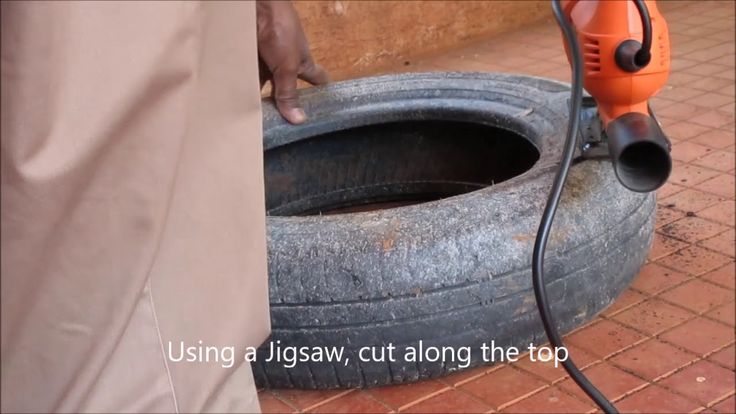 It starts from our minimum charge of 1/8th of a truck all the way up to a full truckload. Since the price is based on volume, we need to see your items in person to give you an exact price. Call or book your free no-obligation estimate today! For more information on our pricing, visit our pricing page.
It starts from our minimum charge of 1/8th of a truck all the way up to a full truckload. Since the price is based on volume, we need to see your items in person to give you an exact price. Call or book your free no-obligation estimate today! For more information on our pricing, visit our pricing page.
Unlike your other household waste, tires are made from non-biodegradable, flammable material that make leaving them in a landfill dangerous to the environment.
Recycling is the most proper way to dispose of your tires. Here are some of the best ways to handle used tire disposal:

Don’t waste time looking for a recycling facility or opportunity to get rid of your rubber junk. 1-800-GOT-JUNK? will help you to get rid of old tires and make sure they get to the right recycling facility. Together, we make sure tires don’t stay in your backyard or end up in the landfill.
Please note that not all locations are able to accept tires, so give us a call to see how best we can help.
Don’t waste time looking for a recycling facility or opportunity to get rid of your rubber junk. 1-800-GOT-JUNK? will help you to get rid of old tires and make sure they get to the right recycling facility. Together, we make sure tires don’t stay in your backyard or end up in the landfill.
However, there are several other places to throw away and recycle your old tires:
Not sure how to handle old tires on your own? Let 1-800-GOT-JUNK? take care of it for you. We’ll remove unwanted tires from wherever they’re located, load them into our truck, and then make sure to dispose your tires responsibly. Give us a call to see if your local team can help remove tires.
We’ll remove unwanted tires from wherever they’re located, load them into our truck, and then make sure to dispose your tires responsibly. Give us a call to see if your local team can help remove tires.
Tires can - and should - be recycled. Tires are made of synthetic and non-synthetic rubber, wires, and fabric that cannot decompose on their own. When sent to a landfill, tire piles can build up over time, taking up space and resources. And when they’re burned, the materials in old tires release harmful toxins into the environment.
The safest way to handle old tires is to recycle them. You can recycle old tires and reuse them as construction material or as upcycled household items. If you don’t have the space for used tires, recycling facilities can break down the materials for other purposes.
If you have a pile of used tires that you want to remove, our friendly 1-800-GOT-JUNK? crew is in your neighborhood and happy to help! Call today to see if we are able to remove tires in your location, and for a no-obligation estimate.
To recycle a used tire, the entire tire must first be taken apart. The rubber, steel, wires, and fabric, are each removed. They are then reused or undergo their own separate recycling process.
Recycled rubber is used to create things like construction materials, playground equipment, and athletic tracks. The rest of the scrap parts are used as fuel supplements in different cement and pulp industries.
If you have a pile of old tires lying around your house, consider calling our professional crew at 1-800-GOT-JUNK? to take it away for you. We make sure to dispose of tires in an environmentally-friendly way after hauling them away from your house. All you have to do is point!
Old tires don’t have to be thrown away. Reusing old tires is one of the best ways to decorate your home, create something new, and keep the environment safe!
Some of the most popular things to do with old tires include:
DIY projects are a fun way to make use of your old rubber junk.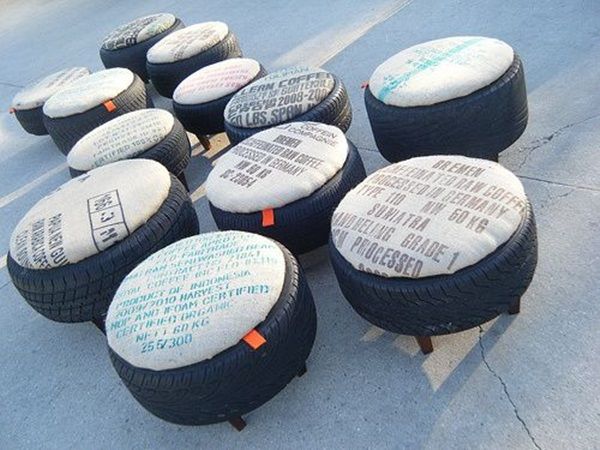 If you would rather just get those old tires out of your way altogether, call 1-800-GOT-JUNK?. Schedule your no-obligation estimate today!
If you would rather just get those old tires out of your way altogether, call 1-800-GOT-JUNK?. Schedule your no-obligation estimate today!
1. Ecouniversal LLC (tire recycling)
Nizhny Novgorod, st. Internatsionalnaya, 100 office 822 Tel. +7 (831) 283-02-99 Email: [email protected]
2. OOO NPO Promekologiya (Utilization of industrial rubber goods, tires, oil sludge, used oils, polymers)
603093 , Nizhny Novgorod, st.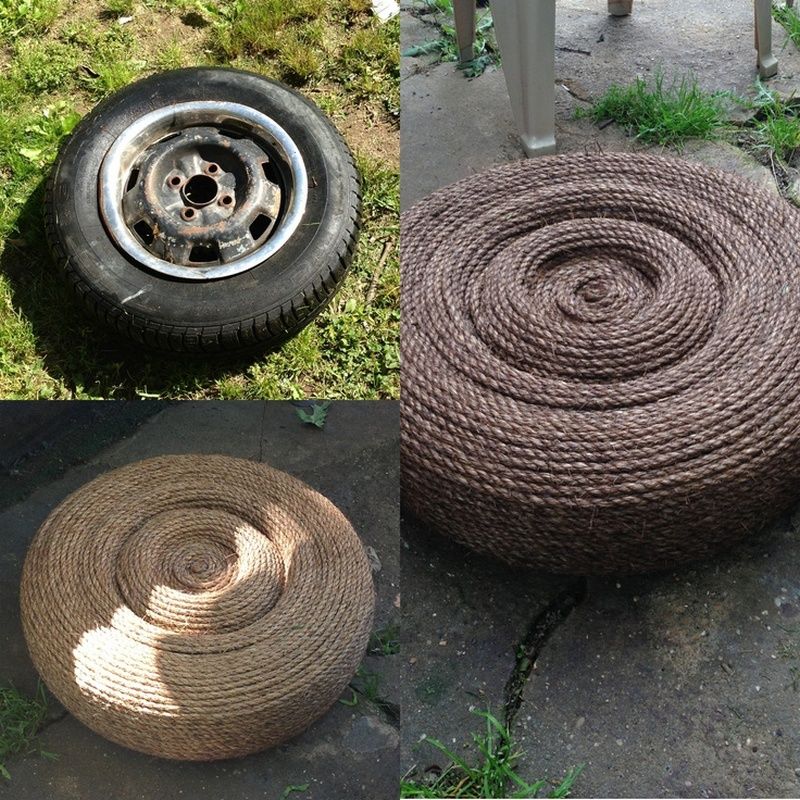 Yablonevaya, 26 Tel. 8-920-011-66-27, 8(831) 413-08-89
Yablonevaya, 26 Tel. 8-920-011-66-27, 8(831) 413-08-89
603123, Nizhny Novgorod, Dudenevskoe highway, 12 Tel. 8-920-011-66-27 4. Nizhny Novgorod plant for the processing of industrial rubber goods 5. LLC TransInfo Private ad I will buy old tires for recycling. Interested in tires of all sizes (cars, trucks, CGSH, SKGSh, with cord, without cord) Recycling car tires is a process on which the ecological future of our planet depends to a large extent. If you are a resident of Nizhny Novgorod, then you have several options for recycling tires. Motorists who decide to get rid of an old set of tires can always contact one of the service stations involved in this or a special collection point. If the rubber is in relatively good condition, you can even get something for it. Such organizations as the Nizhny Novgorod Rubber Recycling Plant or PKF Ecological Tire Recycling are actively involved in buying up and recycling on a large scale, and there are also many private entrepreneurs. There are several ways to recycle truck tires. Tires are also crushed and ground here, but after pre-freezing (down to -70°C). "Blow up" them in a special chamber. Such recycling of rubber tires cryotechnology allows much more efficient production of crumbs, cord and textiles. Another option is conversion to heating oil, which is good because it is suitable for rubber of all types without exception. Companies that accept tires for recycling, of course, not only do a good deed for our planet, but also earn money by selling the resulting product. The same rubber crumb is considered to be quite a valuable raw material, from which, in particular, specialized coatings for sports fields and sound-absorbing elements for railway or tram tracks are made. *Related article: Old car recycling program in Russia Share information with friends on social networks Millions of old tires have accumulated in Russia. In legal and illegal dumps. They lie along roadsides, in wastelands, in yards, in forests and fields, even in the form of a flower bed fence. And we silently look at how a monstrous ecological catastrophe is ripening before our very eyes. Mikhail Rostarchuk Not only that. Every year, on the axles of new cars, from the warehouses of tire factories, about 80 million new tires are thrown into circulation - about a million tons! Which in three or four years they will “mouse” and leave. Anywhere. Despite existing but poorly functioning bans on unauthorized dumping of garbage. Most of the so-called civilized countries have already moved away from such a ruthless "interaction" with the environment. Including worn tires. In any case, in European countries, where from 19A 99 EU directive prohibits the disposal of whole or cut used tires, and a 2008 directive defines the principles of waste management in the interests of preserving the environment. And what about in Russia? There is a non-working federal law of 1998 "On production and consumption waste". There are amendments to it, which are shelved in the government of the country. All! Meanwhile, in the development of amendments to the law, hung in the White House, one of the world's leading tire manufacturers, the Finnish Nokian Tires, a company that is familiar with the problem from hearsay, also took part. After all, the basis of the European tire recycling model is the principle of “producer responsibility”. And it is precisely the three northern countries - Finland, Sweden and Norway, where they are especially reverent about the fragile and easily vulnerable Nordic environment, back in 19In 1993, they became the pioneers of civilized tire recycling in Europe. Recycling should be transparent What is the main point of the Finnish tire recycling model? Firstly, as a non-profit (!) institution, it is absolutely transparent, like water in thousands of Finnish lakes, although a solid financial flow flows in and out through its “vascular system”. Secondly, the state has not invested and is not investing either a euro or a cent in it, and therefore the Finnish way of recycling is not stuck in bureaucratic networks. Thirdly, it is effective - 100% of used tires are collected throughout the country, 120% (an increase due to the extraction of tires from old deposits) is either processed into secondary raw materials or used to generate electricity. Risto Tuominen, a large, energetic man charged with an active life position in his very troublesome business, is the CEO of the non-profit Finnish Recycling Company (Suomen Rengaskierratys Oy). In addition to him, there is only one employee in the “office”. Tire tax Who pays? That's right, buyer! On average, the price of a passenger car tire in Finland also includes 1.75 euros for recycling + 24% VAT on this amount. The Finnish car owner pays this fee even when he buys a new car. Tire sellers, as well as their manufacturers/importers, are strictly accountable for this recycling fee from each tire, which goes in full to Risto Tuominen's safe, and he already pays for the work of the operators. But killing an old tire is only half the battle. The technology has already been developed, mobile mechanized columns have been created, wandering from landfill to landfill, deftly and quickly removing disks, steel cord from tires, shredding rubber into pieces and chips of various sizes, up to rubber crumb (depending on how this raw material will be used further ). What can be done with old rubber For example, dry cement producers have mastered the combustion of not gas or fuel oil in furnaces, but chips from used tires - it turned out to be much cheaper, while the rubber burns completely, even without ash. Recycled worn tires are used to make materials for the construction of high-speed roads; noise barriers; preparing the foundation for new landfills when old ones are closed; used in the arrangement of sports fields and playgrounds, arenas for riding. Projects are being developed to use secondary resources obtained from the disposal of tires for water purification (rubber crumb removes a third of the fluorine and half of the nitrogen contained in it), the restoration of old peatlands and wasted swamps; in the fight against vibration of railway tracks.... In general, in Europe, the evolution of the tire recycling process led from 1996 to 2010 to the fact that the disposal of old tires decreased (in percent) from 49 to 4, the recovery of secondary energy increased from 20 to 40, the recovery of secondary resources from 11 to 38, while the retreading of old heavy-duty tires has dropped from 12 to 9. ... But let's get back to Russian realities. The main thing that is alarming is not only that there is again a delay at the government level in the adoption of a new recycling legislation. And not even that the recycling of tires is not solved by a separate law, but together with a long list of other industrial and household waste (the experience of Europe is not a decree for us, we are not interested in the transparency of the process). And the fact that the tire recycling fee intends to accumulate the state itself, which will then issue funds for recycling. And so, we know from experience that the games with this new "tire" tax will be opaque, with various subterfuges and tricks, which our bureaucracy is much more inclined towards. What is a car tire and what does it consist of
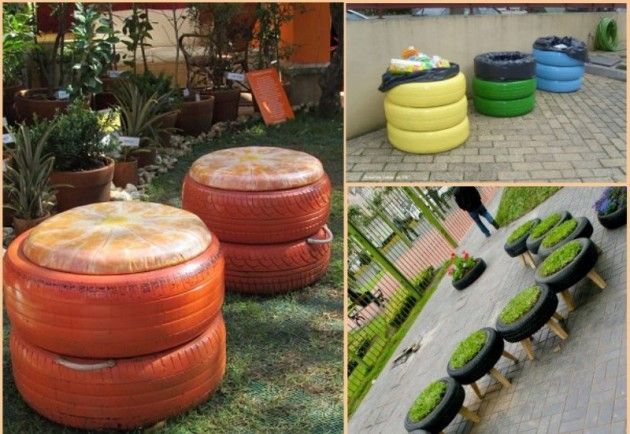 Until relatively recently, most drivers did not really bother with this topic. Worn rubber was usually either simply thrown into a landfill, or used to make flower bed elements, seats, barriers and other practical things. So she lived out her life, slowly decomposing and releasing various toxic substances into the atmosphere. Today, the situation in this regard is gradually changing for the better: more and more people are realizing that tire recycling requires an exceptionally professional approach and appropriate equipment.
Until relatively recently, most drivers did not really bother with this topic. Worn rubber was usually either simply thrown into a landfill, or used to make flower bed elements, seats, barriers and other practical things. So she lived out her life, slowly decomposing and releasing various toxic substances into the atmosphere. Today, the situation in this regard is gradually changing for the better: more and more people are realizing that tire recycling requires an exceptionally professional approach and appropriate equipment. 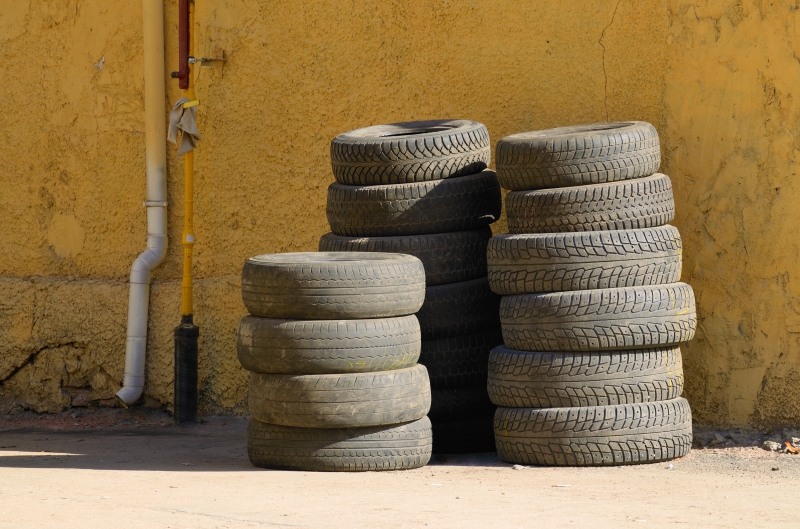
Ways to recycle car tires
What is made from rubber crumb

How old tires are disposed of in Finland - Cars
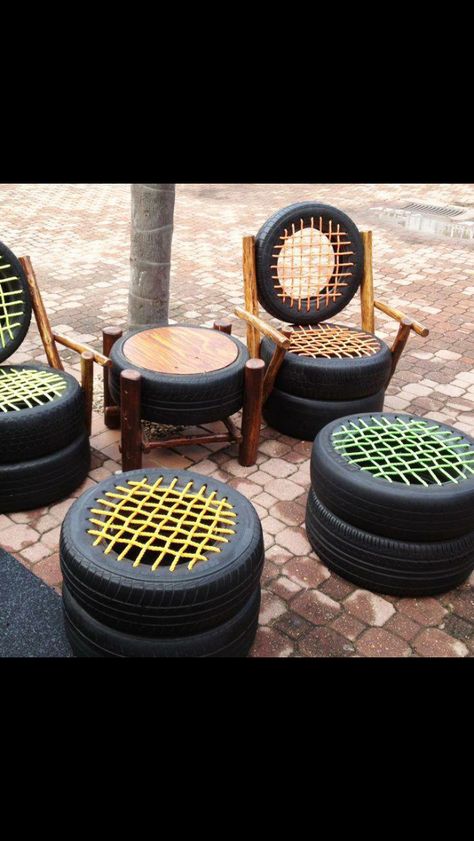 Including tires…
Including tires… 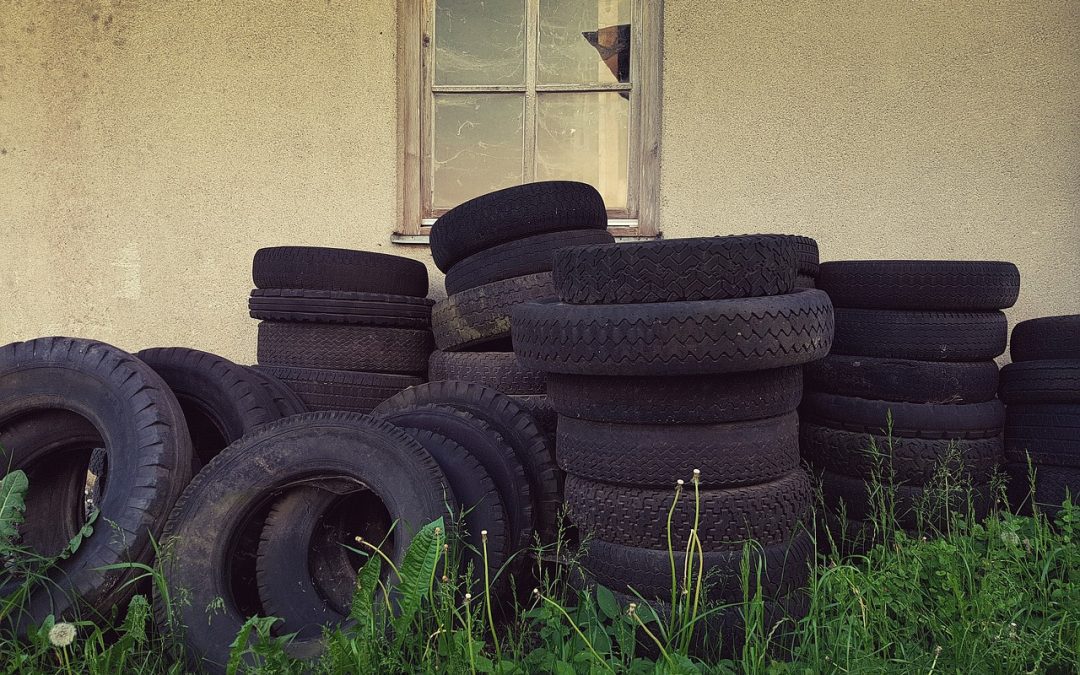
 But it is they who are in charge of all this complex, but working like a clock, recycling mechanism. The founders and owners of the company are global tire brands operating in the country - Bridgestone, Continental, Goodyear, Nokian, Michelin, ARL. The system involves 289tire manufacturers, importers, tire wholesalers, used car recyclers, 2,535 waste tire collection points, 245 containers and two commercial operating companies (selected by tender) that organize tire collection, transportation, storage and disposal.
But it is they who are in charge of all this complex, but working like a clock, recycling mechanism. The founders and owners of the company are global tire brands operating in the country - Bridgestone, Continental, Goodyear, Nokian, Michelin, ARL. The system involves 289tire manufacturers, importers, tire wholesalers, used car recyclers, 2,535 waste tire collection points, 245 containers and two commercial operating companies (selected by tender) that organize tire collection, transportation, storage and disposal. 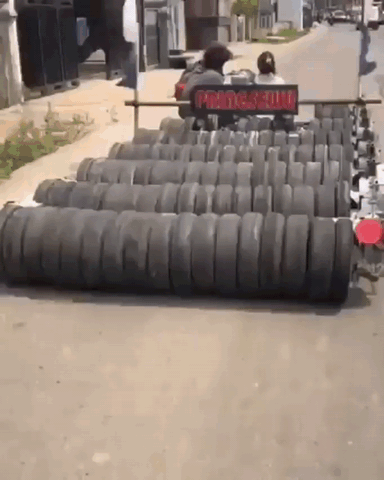 By the way, due to the growing revenue from the sale of secondary resources received from the disposal of tires, Tuominen reduces the amount of recycling fees paid by buyers. Characteristically: refusal to submit an application to the register of tire manufacturers / importers is punishable by a fine of 500 to 500,000 euros, "underground" import and sale of tires - from 500 to 10,000 euros. What's in the net residue? Finns don't have a headache about what to do with a worn tire, the state has no problems with the disposal of old rubber, Finnish society has one less problem related to environmental protection.
By the way, due to the growing revenue from the sale of secondary resources received from the disposal of tires, Tuominen reduces the amount of recycling fees paid by buyers. Characteristically: refusal to submit an application to the register of tire manufacturers / importers is punishable by a fine of 500 to 500,000 euros, "underground" import and sale of tires - from 500 to 10,000 euros. What's in the net residue? Finns don't have a headache about what to do with a worn tire, the state has no problems with the disposal of old rubber, Finnish society has one less problem related to environmental protection. It is especially important that the Scandinavians have learned to get considerable commercial benefits from used rubber.
By the way, Risto Tuominen's company also subsidizes research and development work related to tire recycling and the search for new opportunities for their reuse, including R&D for the project increase the service life of summer tires up to 6.15 years, winter tires - up to 6.37 years, which is beneficial for both the buyer and the recycler.
